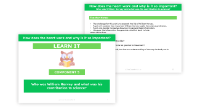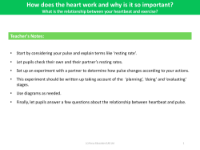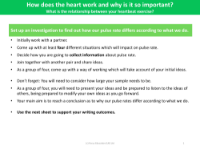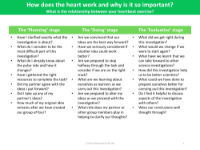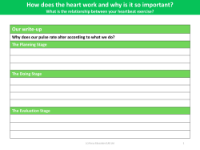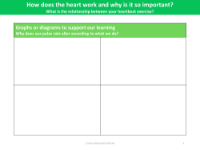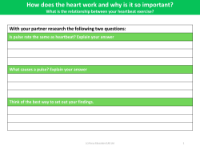What is the relationship between your heartbeat and exercise? - Presentation

Science Resource Description
The presentation explores the intricate connection between heart rate and physical exercise. It begins by discussing the fundamental concepts such as 'resting rate' and instructing pupils on how to measure their own and their partner's resting heart rates. The heart rate, commonly referred to as the pulse, is the number of times the heart beats per minute and varies based on individual factors like age, weight, and fitness levels. When the body is at rest, the heart rate is at its lowest, typically ranging from 60 to 100 beats per minute for adults, though well-trained athletes may have a resting heart rate as low as 40 beats per minute. The significance of the heart and its function is underscored, highlighting its role in pumping blood throughout the body.
The presentation then guides students through setting up an investigation to understand how different activities affect pulse rate. Working in pairs and then in groups, students brainstorm various scenarios that could influence heart rate, decide on methods for collecting data, and discuss how to present their findings. The investigation is structured into 'planning', 'doing', and 'evaluating' stages, where students are encouraged to reflect on the process, consider the effectiveness of their methods, and learn from their experiences. They are also prompted to research and discuss the difference between pulse rate and heartbeat, as well as what causes a pulse, ensuring a comprehensive understanding of the topic.
